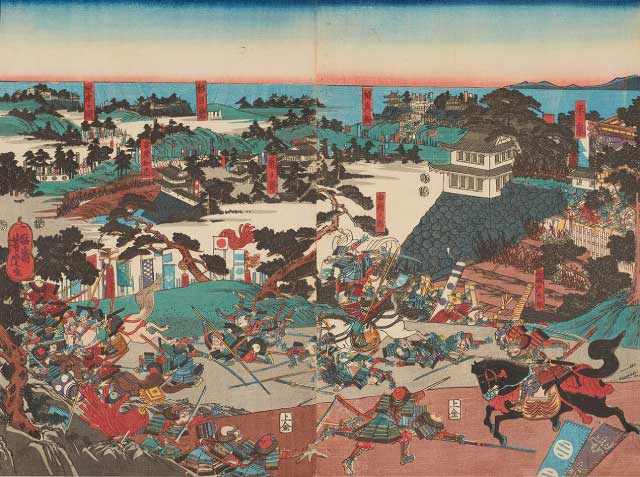
The Northern Fujiwara clan had governed the Mutsu and Dewa provinces since 1087, maintaining their rule for over a century by 1189. The clan was founded by Fujiwara no Kiyohira, alongside Minamoto no Yoshiie, who established their independence in Hiraizumi, located in present-day Iwate Prefecture. Under Kiyohira, and later his successors Fujiwara no Motohira and Fujiwara no Hidehira, the Northern Fujiwara reached the height of their power in the Tohoku region. They infused the area with Kyoto culture and constructed significant temples, such as Chuson-ji, founded in 1095.
During the Genpei War (1180-1185) between the Minamoto and Taira clans, the Northern Fujiwara remained neutral. Even after the Minamoto's victory and the Taira's destruction in 1185, the Northern Fujiwara continued their policy of neutrality, refraining from involvement in the conflict.
The Battle of Oshu was triggered by a dispute over the extradition of Minamoto no Yoshitsune, who had fled to Hiraizumi. Although Hidehira had remained neutral during the Genpei War, he chose to protect Yoshitsune when he sought refuge, straining relations between the Northern Fujiwara and Minamoto no Yoritomo, ultimately leading to a confrontation.
After Hidehira's death, his son, Fujiwara no Yasuhira, became the fourth head of the Northern Fujiwara clan. Under pressure from Yoritomo, Yasuhira ordered Yoshitsune’s assassination during the Battle of Koromo River on June 15, 1189. Yoshitsune's severed head was delivered to Kamakura on July 7, where it was inspected by Wada Yoshimori and Kajiwara Kagetoki. Despite an imperial order from Emperor Go-Shirakawa on July 22 to halt hostilities, Yoritomo was already committed to attacking Hiraizumi, and the order did nothing to mend the broken relationship.
On August 8, Yoritomo petitioned the Imperial Court in Kyoto to authorize a punitive expedition against Fujiwara no Yasuhira. The following day, a revolt in Oshu led to the death of Fujiwara no Tadahira, a supporter of Yoshitsune, the son of Hidehira. On August 30, Yoritomo discussed the conquest of Oshu with his general, Oba Kageyoshi.
However, before the court could issue a decision, Yoritomo launched the expedition independently. According to the Azuma Kagami, he mobilized 284,000 cavalrymen from over 60 provinces across Japan, including southern Kyushu, all converging to attack Hiraizumi. Meanwhile, Yasuhira assembled an army of 170,000 cavalrymen in preparation.
On August 30, Yoritomo and his forces spent the entire day planning the assault, dividing his army into three groups: the Tokaido, Ote, and Hokurikudo forces. The next day, the Hokurikudo forces departed Kamakura. On September 1, Yoritomo, leading the central Ote forces, also set out from Kamakura, advancing north. Along the way, a prisoner from Echigo Province, Jo Nagamochi, joined their ranks.
The central forces, commanded by Yoritomo himself, reached Kotahashi Station in Shimotsuke Province on September 7, where Yoritomo offered a ritual wand to the gods at Utsunomiya Shrine. The following day, he continued north, adding Satake Hideyoshi from Mutsu Province to his army. On September 10, Yoritomo arrived at Nitobe Station, where over 200 retainers of Jo Nagamochi joined the campaign.
On September 11, Yoritomo's forces breached the Shirakawa Barrier, and by September 18, they arrived at Kunimi Station. On September 19, Yoritomo clashed with the Northern Fujiwara forces at Mount Atsukashi, leading to subsequent battles at Ishinazaka and Nenashifuji. These encounters resulted in the deaths of Fujiwara no Kunihira, Kongo no Betto Hidetsuna, Sato Motoharu, and Sato Kinjuro. Yoritomo's forces triumphed on September 21 and continued their advance. The next day, Yoritomo inspected Kunihira's head at Funabasama.
By September 23, Yoritomo's forces had captured Taga Castle in Mutsu Province and joined with the Tokaido forces. Yasuhira was compelled to abandon his primary military base at Kokubugahara Muchidate (in present-day Tsutsuji-gaoka, Sendai). On September 24, the Hokurikudo forces defeated Tagawa Yukibumi and Akita Munebumi in Dewa Province. On September 25, Yoritomo's retainer Oyama Tomomasa crushed the Northern Fujiwara forces at Monomigaoka, allowing Yoritomo to advance to Takahaba Castle in Tamatsukuri. On October 1, Yoritomo captured Takahaba Castle and pushed forward towards Hiraizumi. Yasuhira, unable to defend his capital, abandoned Hiraizumi and set it ablaze on October 2.
Yoritomo entered the scorched remains of Hiraizumi on October 3, defeated the remaining forces, and seized Hiraizumi Castle. On October 6, Fujiwara no Motonari and his sons surrendered at Koromo River Palace. The next day, Yoritomo received a letter from Yasuhira indicating a willingness to surrender. However, on October 13, Yoritomo began a manhunt for Yasuhira at the Kuriyagawa Barrier in Iwate. The following day, Yasuhira was captured by Yoritomo's forces north of Hiraizumi and killed by Kawada Jiro in Nienosaku, Hinai, Mutsu Province (now Odate, Akita Prefecture).
The Battle of Oshu concluded with Minamoto no Yoritomo's decisive victory and the defeat of the Northern Fujiwara. This marked the end of the civil war that began in 1180 and solidified Yoritomo's nationwide control through the annexation of Mutsu and Dewa provinces, leading to the establishment of the Kamakura shogunate.
After Yasuhira's death, Yoritomo's forces, along with the Hokurikudo troops, arrived at Jingaoka in Shiwa on October 15, 1189. Two days later, Kawada Jiro presented Yasuhira’s severed head to Yoritomo. Following the custom from the Former Nine Years' War, Yoritomo displayed the head by nailing it in place.
On October 18, Yasuhira's loyal attendant, Yuri Korehira, was captured. Impressed by Korehira's bravery, Yoritomo remarked, "Yasuhira held power in Oshu, and I thought it would be difficult to defeat him, yet Kawada Jiro alone ended his life because he lacked a worthy attendant. Despite ruling two provinces and leading 170,000 cavalrymen, his entire clan fell within 20 days. The rest is insignificant." Korehira replied, "The former Head of the Left Division of the Bureau of Horses ruled fifteen provinces along the Tokaido but could not withstand a single day during the Heiji Rebellion and was killed by Nagata Tadamune, though he commanded tens of thousands of cavalrymen. Can we truly judge superiority or inferiority between past and present? Yasuhira commanded only a small number of warriors from two provinces, yet he resisted Lord Yoritomo for many days. It is not easy to draw conclusions."
On October 19, Yoritomo dispatched a courier to Kyoto to announce his victory. Although the Imperial Court had not approved Yoritomo’s request during the battle, it issued a retroactive order of approval after the conflict ended. On October 20, Ichijo Yoshiyasu sent a court order from Kyoto for the punitive expedition against Yasuhira, dated September 1, 1189, to Yoritomo at Jingaoka.
On October 22, Yoritomo left Jingaoka to stay at the Kuriyagawa Barrier. Eight days later, he moved to Hiraizumi, where he appointed Kasai Kiyoshige as Magistrate (bugyo) of Mutsu Province. After solidifying his control, Minamoto no Yoritomo and his forces departed from Oshu and returned to Kamakura on November 8, 1189.
See also
-
The Siege of Hara Castle

The Shimabara Rebellion of 1637–1638, which culminated in the siege of Hara Castle, was the last major uprising of the Edo period and had serious political consequences.
-
Battle of Tennoji
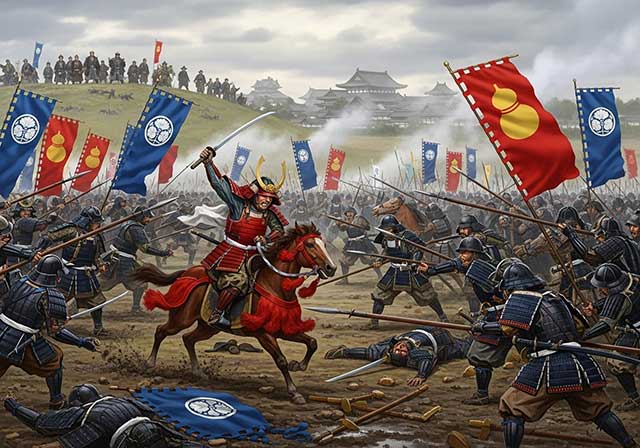
The confrontation between Tokugawa Ieyasu and Toyotomi Hideyori during the “Osaka Winter Campaign” ended with the signing of a peace treaty. On January 22, 1615, the day after the treaty was signed, Ieyasu pretended to disband his army. In reality, this meant that the Shimazu forces withdrew to the nearest port. On the same day, almost the entire Tokugawa army began filling in the outer moat.
-
Siege of Shuri Castle
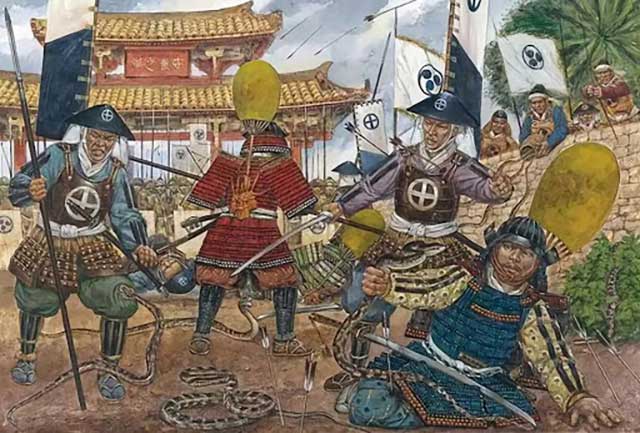
The Ryukyu Kingdom was established in 1429 on Okinawa, the largest island of the Ryukyu (Nansei) archipelago, as a result of the military unification of three rival kingdoms. In the following years, the state's control spread to all the islands of the archipelago.
-
The Siege of Fushimi Castle
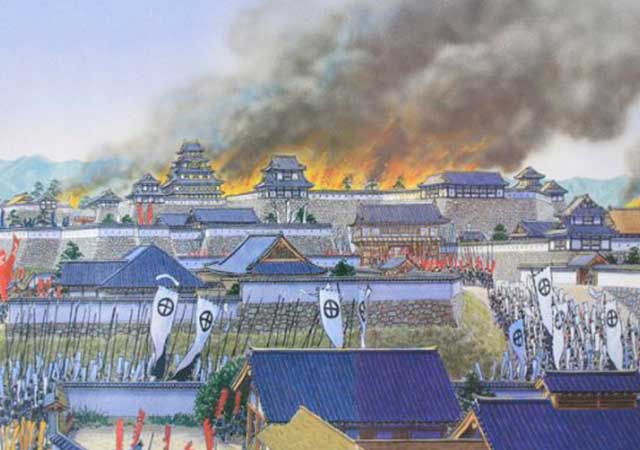
Fushimi can perhaps be considered one of the most “unfortunate” castles of the Sengoku Jidai period. The original castle was built by Toyotomi Hideyoshi in the southeast of Kyoto in 1594 as his residence in the imperial city.
-
The Siege of Otsu Castle
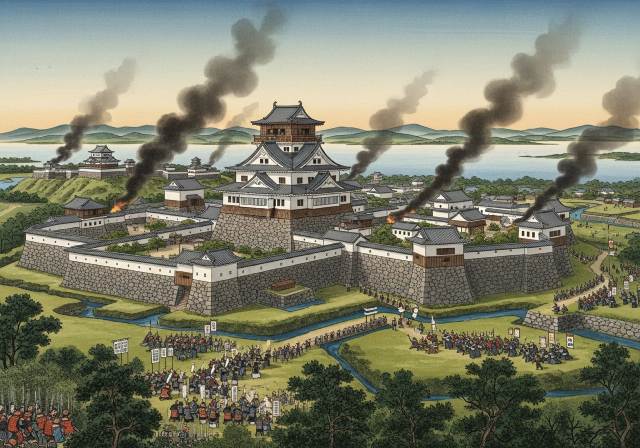
The siege of Otsu Castle was part of the Sekigahara campaign, during which the so-called Eastern Coalition, led by Tokugawa Ieyasu, fought against the Western Coalition, led by Ishida Mitsunari. Otsu Castle was built in 1586 by order of Toyotomi Hideyoshi near the capital Kyoto, on the site of the dismantled Sakamoto Castle. It belonged to the type of “water castles” — mizujō — as one side of it faced Japan's largest lake, Lake Biwa, and it was surrounded by a system of moats filled with lake water, which made the fortress resemble an island.
-
The Siege of Shiroishi Castle
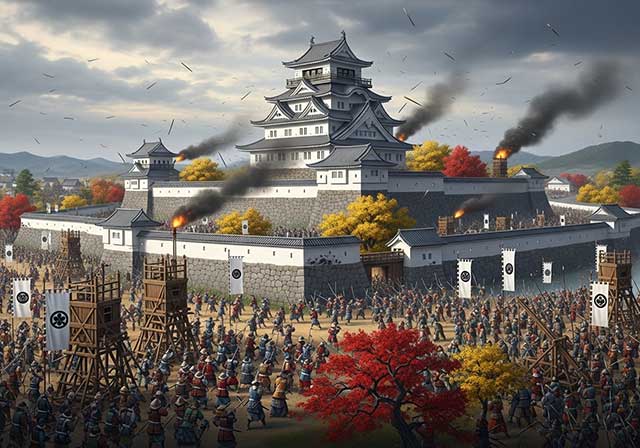
The siege of Shiroishi Castle was part of the Sekigahara campaign and took place several months before the decisive battle of Sekigahara. The daimyo of Aizu Province, Uesugi Kagekatsu, posed a serious threat to Tokugawa Ieyasu's plans to defeat the Western Coalition, and Ieyasu decided to curb his actions with the help of his northern vassals. To this end, he ordered Date Masamune to invade the province of Aizu and capture Shiroishi Castle.
-
The Second Siege of Jinju Castle
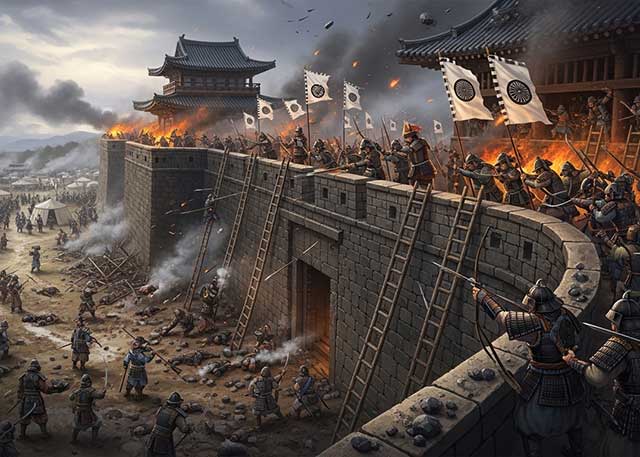
During the two Korean campaigns of the 16th century, the Japanese repeatedly had to capture enemy fortresses and defend occupied or constructed fortifications from the combined Korean and Chinese forces. Among all the operations of that time, the second siege of Jinju Castle is considered the most interesting from the point of view of siege warfare.
-
The Siege of Takamatsu Castle
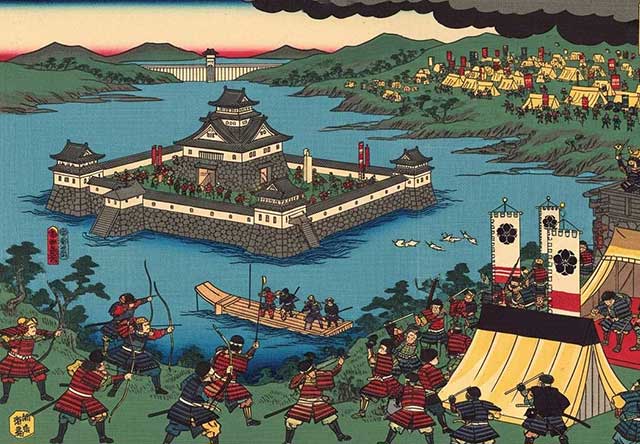
The siege of Takamatsu Castle in Bitchu Province is considered the first mizuzeme, or “water siege,” in Japanese history. Until then, such an original tactic had never been used.

